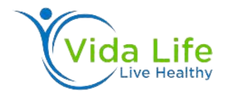
An attack can be eased with various medications, but experts often suggest taking simple painkillers like ibuprofen and acetaminophen (while avoiding those that contain caffeine).
Triptans, available as pills, nasal sprays or injections, help block pain pathways in the brain. Their effectiveness increases significantly if taken as soon as the headache stage starts.
Medications
Migraine medications can help stop migraines or reduce symptoms like pain, nausea and sensitivity. Taken early at the sign of headache, they come in pill, nasal spray or injection form for convenient use.
Some painkillers work better for migraines than others. Your doctor may suggest using Tylenol or nonsteroidal anti-inflammatory drugs like ibuprofen, naproxen or diclofenac as anti-inflammatories; prochlorperazine or domperidone could also help decrease nausea and vomiting symptoms.
Triptans are another type of migraine medicine, believed to work by altering blood vessel diameter and inflammation, to provide moderate to severe migraine pain relief in adults without vascular disease. Doctors may prescribe oral tablets such as sumatriptan, almotriptan, eletriptan, frovatriptan naratriptan or rizatriptan and can either take alone or combine with painkillers as a course of treatment.
At the first sign of headache, an electrotherapy device such as Spring TMS or eNeura sTM should be held and used to send magnetic pulses directly into the brain in order to reduce pain.
Lifestyle Changes
Migraine sufferers can find relief through lifestyle modifications. These may include sleep, exercise and dietary adjustments. Food triggers like aged cheeses, chocolate and caffeine should be avoided to ensure maximum effectiveness; additionally, processed hot dogs or pepperoni that contains nitrates/MSG may act as migraine triggers in certain individuals.
Drink plenty of water throughout the day in order to remain properly hydrated; numerous studies have demonstrated that dehydration can worsen migraine symptoms.
Transcranial magnetic stimulation (TMS) may be effective at disrupting CSD, helping reduce migraine headache pain. Single pulse TMS (sTMS) has proven particularly effective at treating acute migraine attacks; one randomised, sham-controlled trial found it was more successful than placebo in relieving pain and improving functioning (54).
Non-Medication Approaches
These non-medical treatments may help alleviate migraine pain. Exercise (including walking, swimming or cycling), taking a warm bath with Epsom salts added for relaxation purposes and using cold or heat packs on your head and neck are among the many possible approaches.
Diet changes also appear to help. Avoiding foods known to trigger migraine attacks can help decrease attacks. Maintaining a food diary may assist with pinpointing these triggers; then experiment with eating these foods one at a time until you see how your body responds.
Biofeedback training (which uses electronic devices to teach you to control some physical responses to pain) and cognitive behavioral therapy are effective relaxation techniques; others include acupuncture and non-invasive neuromodulation therapies like transcranial magnetic stimulation (sTMS), occipital nerve stimulation and sphenopalatine ganglion stimulation (nVNS) may be beneficial if pharmacologic treatments fail; but be sure to discuss risks and benefits of such treatments with your physician first. [24,25] These treatments may not suit everyone; be sure to discuss risks and benefits with your physician before starting them!
Other Approaches
Traditional medications may provide migraine relief, but often come with unwanted side effects such as weight gain, fatigue, mood swings and insomnia – which all affect quality of life as much as pain itself.
Alternative therapies provide a holistic solution for managing migraine. Many practices involving mindfulness and relaxation techniques have proven useful in relieving stress levels – something known to trigger migraine attacks.
Alternative treatments such as acupuncture and biofeedback have shown promising results in clinical trials. Cognitive behavioral therapy also assists people in changing their behavior to reduce migraine frequency and severity.

